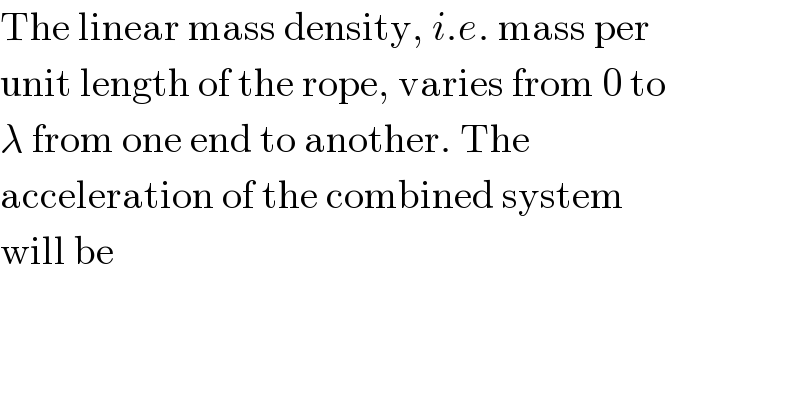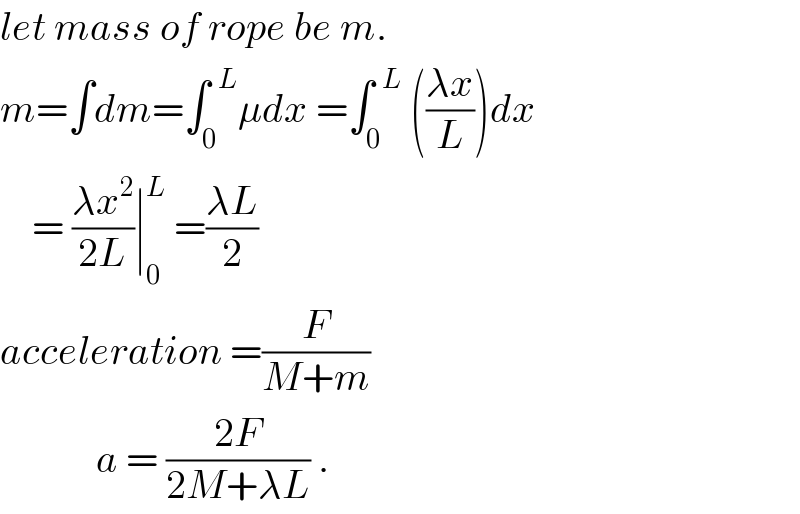
Question Number 22139 by Tinkutara last updated on 11/Oct/17

$$\mathrm{The}\:\mathrm{linear}\:\mathrm{mass}\:\mathrm{density},\:{i}.{e}.\:\mathrm{mass}\:\mathrm{per} \\ $$$$\mathrm{unit}\:\mathrm{length}\:\mathrm{of}\:\mathrm{the}\:\mathrm{rope},\:\mathrm{varies}\:\mathrm{from}\:\mathrm{0}\:\mathrm{to} \\ $$$$\lambda\:\mathrm{from}\:\mathrm{one}\:\mathrm{end}\:\mathrm{to}\:\mathrm{another}.\:\mathrm{The} \\ $$$$\mathrm{acceleration}\:\mathrm{of}\:\mathrm{the}\:\mathrm{combined}\:\mathrm{system} \\ $$$$\mathrm{will}\:\mathrm{be} \\ $$
Commented by Tinkutara last updated on 11/Oct/17

Commented by ajfour last updated on 11/Oct/17

$${let}\:{mass}\:{of}\:{rope}\:{be}\:{m}. \\ $$$${m}=\int{dm}=\int_{\mathrm{0}} ^{\:\:{L}} \mu{dx}\:=\int_{\mathrm{0}} ^{\:\:{L}} \:\left(\frac{\lambda{x}}{{L}}\right){dx} \\ $$$$\:\:\:\:=\:\frac{\lambda{x}^{\mathrm{2}} }{\mathrm{2}{L}}\mid_{\mathrm{0}} ^{{L}} \:=\frac{\lambda{L}}{\mathrm{2}} \\ $$$${acceleration}\:=\frac{{F}}{{M}+{m}} \\ $$$$\:\:\:\:\:\:\:\:\:\:\:\:{a}\:=\:\frac{\mathrm{2}{F}}{\mathrm{2}{M}+\lambda{L}}\:. \\ $$
Commented by Tinkutara last updated on 11/Oct/17

$$\mathrm{Thank}\:\mathrm{you}\:\mathrm{very}\:\mathrm{much}\:\mathrm{Sir}! \\ $$
